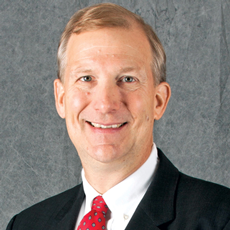
Today’s column can be filed under the “Be careful what you ask for” category.
If you have been tired of Centers for Medicare & Medicaid Services Administrator Seema Verma playing the smiling “We’re here to help you” game while brandishing a meat fork behind her back, you are not alone.
While initially expressing a promising “We want to cut down your administrative burdens and costs” message, Verma has more recently been a pain in long-term care providers’ ribs. Her five-pillar campaign has started to roughly poke, prod and herd providers into stricter compliance. And that’s with only a few of the pillars’ bitter details revealed. Providers cannot be too optimistic about what new nightmares might await them behind the other curtains.
Who wouldn’t want a change from that?
Well, on Tuesday, the CMS chief stepped out of the spotlight … and in stepped the nation’s top law enforcement official. U.S. Attorney William P. Barr announced the Department of Justice’s National Nursing Home Initiative in Tampa. And that wasn’t a meat fork in his hand. At least a few providers must have been seeing a pitchfork.
The new initiative was introduced alongside results of the DOJ’s 2020 Elder Fraud Sweep results. The latter involved more than 400 swindlers, who scammed more than $1 billion from seniors. Fraud against the senior set has flourished in the new tech era, quadrupling from 2013 to 2017 and involving more than $6 billion, Barr noted.
But the real red meat of his day came when focusing on “provider owners and operators who put profits over patients, leading to instances of gross abuse and neglect.”
The new initiative trades the paperwork promises of CMS with potential shackles from the Justice department.
This initiative may be … just what the industry needs.
If it sticks to Barr’s stated mission Tuesday, that is.
He spoke of going after “some of the worst nursing homes around the country.” Already, federal badge holders have targeted about 30 individual facilities in nine states, he revealed.
He noted some of the criteria used to identify “the most problematic” nursing facilities. In doing so, he gave providers a crystal ball for divining whether they might pop into Barr’s crosshairs.
What are they looking for? Facilities that consistently fail to provide adequate nursing staff; those who don’t follow “basic protocols” of hygiene and infection control; those who don’t give residents enough food to eat; those who wrongly withhold pain meds; and those who use chemical or physical restraints.
“These are some of the actions and inactions that the department intends to pursue,” Barr promised, adding leaky roofs, mold in rooms and rodents as other catalysts for tough action.
He spoke of going after providers of “grossly substandard care.” Not mentioned were one-off bad acts.
So, really, who can argue against such goals? The targeted providers are supposed to be way on the other end of the baseball, Mom and apple pie spectrum.
It should be noted that Barr used his last few lines on the issue to say that “none of this is an indictment” of the care industry as a whole.
“There are many terrific facilities out there being managed by wonderful people with dedicated staff,” he offered. “To be sure, most of them are great, delivering the care that their residents need and deserve. Unfortunately, there are some really bad apples who are abusing seniors, and we are set on figuring out exactly who they are, and putting an end to their cruelty.”
Once the real detritus is cleared from the scene, the issue of moving goalposts will be a big worry, of course. Federal regulators, unfortunately, have a history of switching goals on providers — and unapologetically so. It’s appropriate to be anxious about what might come after an initial round of cleansing.
My inquiry to the Department of Justice about how deep the investigations and prosecutions might dig, beyond the initial 30 facilities referred to Tuesday morning, was not answered as of Tuesday evening. (It would stand to reason that the worst of the “worst of the worst” — that is, to say the most dangerous on the Special Focus Facilities list — would be initial targets. But who comes after that?)
The initial sweeps, however, should be something that all right-thinking nursing home operators cheer, if only silently to themselves. Who among the provider community hasn’t cringed when a news story about gross negligence or mistreatment hits the airwaves? Even if it occurs far away, all providers get tarred and feathered with the biggest scoundrel’s misdeeds. It happens time and time again. Taking as many stained ne’er-do-wells as possible out of the marketplace should be welcomed.
Too bad it might take a new initiative under the auspices of the Department of Justice, in “strong” partnership with the Department of Health and Human Services, to get it done.
Follow Executive Editor James M. Berklan @JimBerklan.



